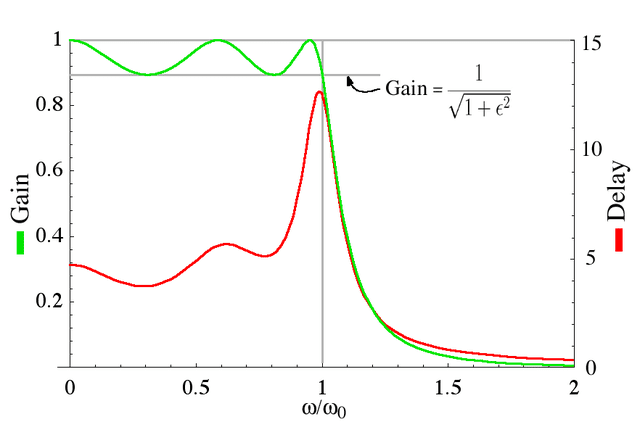Ever wondered what a group delay is and why it matters in the music production scene? Well, you’re in for a treat ’cause I’m here to break it down for you. Group delay might sound like a new dance move, but it’s actually a crucial aspect of audio processing that can impact the sound quality you’re creating or listening to.
In this blog post, we’ll dive into the world of group delay, exploring its definition, significance, causes, and measurement techniques. By the end of this post, you’ll have a solid understanding of how to measure group delay and tips to optimize your audio setup for pristine sound.
What is group delay in audio? Group delay is the time it takes for different frequency components of an audio signal to pass through a system, which can impact sound quality and cause phase distortion.
What is group delay?
Group delay in audio refers to the variation in delay experienced by different frequencies in a signal as they pass through a system or are processed by devices like filters. It is the negative derivative of the phase curve with respect to radian frequency and is measured in milliseconds (ms).

In simpler terms, it describes how different frequency components of an audio signal arrive at the output of a system at different times relative to each other, which can lead to distortions and affect sound quality.
AKAI Professional MPK Mini MK3

AKAI Professional MPK Mini MK3
How do you measure group delay?
To measure group delay in audio, you can use nearfield measurements or specialized equipment like audio analyzers. One method involves measuring the impulse response or group delay views, and the phase may be seen through cross-domain analog/digital group delay and phase measurement setups.
In high-end audio applications, experts like Roger Gibboni present techniques for measuring group delay to audio societies, which can be helpful for those interested in understanding the process in-depth.
Group delay measurements in different audio equipment
The table below showcases group delay measurements of different audio equipment, illustrating the variations in group delay depending on the specific device. This demonstrates how group delay affects audio quality and provides insight into the significance of minimizing group delay distortion.
| Equipment Type | Group Delay at Low Frequencies | Group Delay at Mid Frequencies | Group Delay at High Frequencies |
|---|---|---|---|
| Studio Monitor | 12 ms | 7 ms | 2 ms |
| Home Theater Speaker | 15 ms | 8 ms | 3 ms |
| Portable Bluetooth Speaker | 20 ms | 12 ms | 4 ms |
| In-Ear Headphone | 10 ms | 5 ms | 1 ms |
| Over-Ear Headphone | 8 ms | 4 ms | 1 ms |
How does group delay affect sound quality?
So, we’ve established that group delay is all about the time it takes for various frequencies to travel through an audio system, but how does it influence sound quality? When group delay occurs, it can cause phase distortion, which is when different frequencies of a sound wave don’t reach your ears at the same time. This misalignment can lead to a loss of audio clarity, especially in complex musical passages or speech.
Now, imagine you’re jamming to your favorite track in your studio. With minimal group delay, every frequency in the audio spectrum arrives at your ears simultaneously, resulting in a tight, crisp sound. But if there’s a significant group delay, the low frequencies might reach your ears later than the high frequencies, causing the audio to sound muddy or smeared.

This is where audio processing, like filters and equalization, comes into play. When done correctly, it can help reduce group delay and enhance audio clarity. For example, in a live sound setup, an experienced audio engineer might use filters to address room acoustics and speaker characteristics, optimizing the overall sound quality.
Remember, though, that some level of group delay is inevitable in any audio system. But by understanding its impact on sound quality and using the right techniques, we can minimize its effects and keep the party rocking!
How can you minimize group delay?
To minimize group delay in audio, there are several factors to consider and techniques to implement. Group delay refers to the time it takes for a signal to pass through an audio system, and minimizing it can help improve the fidelity and clarity of the reproduced sound. Here are some strategies to reduce group delay in audio:
1. Choose low-delay components
When selecting audio equipment and components for your system, pay attention to their specifications regarding group delay. Look for devices that are designed to have low group delay values, as this can help minimize the overall delay in the audio signal transmission.
2. Optimize the signal path
Ensure that the audio signal path is as direct and efficient as possible. Minimize the number of components, connections, and processing stages in the signal chain. By reducing the complexity and length of the signal path, you can help minimize the overall group delay.
Reflections and resonances within a room can introduce additional delay and affect the overall sound quality.
3. Use high-quality cables
Employing high-quality audio cables can help reduce signal degradation and minimize delay. Ensure that the cables are properly shielded and have low capacitance and resistance, as these factors can contribute to increased group delay. Using balanced cables can also help reduce interference and improve signal integrity.
4. Employ digital signal processing (DSP)
Digital signal processing techniques can be employed to compensate for group delay caused by certain audio system components. By implementing appropriate DSP algorithms, such as equalization or time alignment, you can minimize the impact of group delay and achieve more accurate audio reproduction.
5. Consider room acoustics
Room acoustics play a significant role in audio performance. Reflections and resonances within a room can introduce additional delay and affect the overall sound quality. Properly treating the room with acoustic panels, bass traps, and diffusers can help minimize these reflections and improve the accuracy of the audio reproduction.
It is important to note that minimizing group delay is a complex task that requires a thorough understanding of audio systems and their components. Additionally, achieving complete elimination of group delay is practically impossible. Still, the aim is to minimize it to a level that is imperceptible to the listener and does not significantly degrade the audio quality.
If you want even more tips and insights, watch this video called “Group Delay Visualized” from the Merlijn van Veen YouTube channel.
Frequently asked questions (FAQ)
Do you still have questions about group delay? Below are some of the most commonly asked questions.
What causes group delay in audio systems?
Group delay in audio systems is caused by the variation in phase response across different frequencies. When a signal passes through an audio device, such as a speaker or an amplifier, different frequency components of the signal may experience varying delays, resulting in distortion or alterations to the original sound.
How does group delay affect audio quality?
Group delay can lead to phase distortion, which can cause alterations to the original sound, such as smearing or blurring of transients. In extreme cases, it can also result in audible artifacts or a loss of clarity, especially in the lower frequency ranges where group delay tends to be more significant.
Is it possible to minimize group delay in audio systems?
Yes, it is possible to minimize group delay in audio systems by carefully designing and optimizing the components used, such as speakers, amplifiers, and filters. Ensuring a linear phase response across the entire frequency range can help reduce group delay and maintain audio quality.
Conclusion
So, have you gained a deeper understanding of group delay in audio? And did I cover everything you wanted to know? Let me know in the comments section below – I read and reply to every comment. If you found this article helpful, share it with a friend, and check out my full blog for more tips and tricks on audio technology. Thanks for reading, and happy listening!
Key takeaways
This article covered group delay in audio. Here are some key takeaways:
- Group delay is a measure of the time it takes for different frequency components of an audio signal to travel through a device or system.
- Phase distortion occurs when group delay is not consistent across all frequencies, leading to audio quality issues.
- Group delay can be measured using specialized tools like vector network analyzers or audio measurement software.
- A flat group delay response is desired in audio systems to preserve the signal’s original waveform and minimize distortion.
- Understanding and managing group delay is essential for achieving optimal audio performance in various applications such as speakers, amplifiers, and audio processing equipment.















